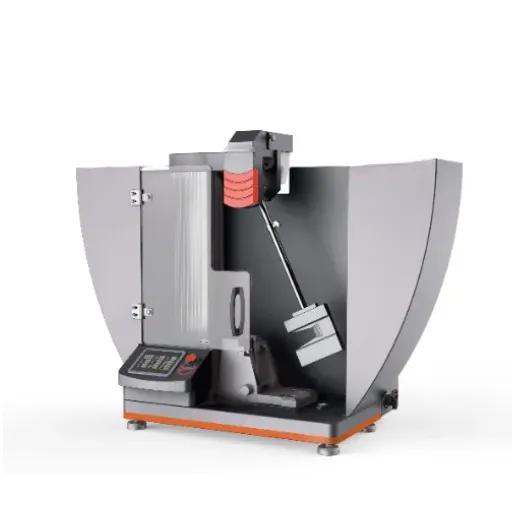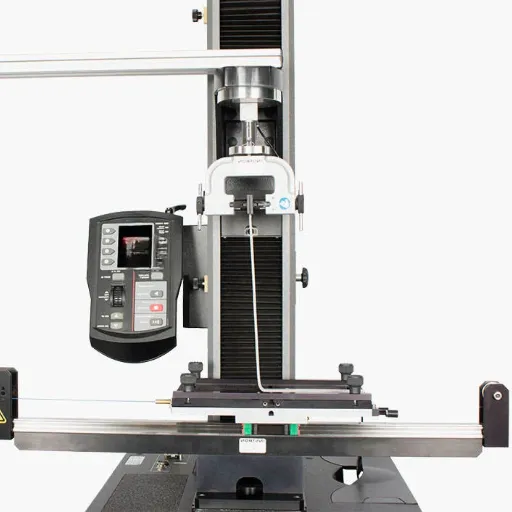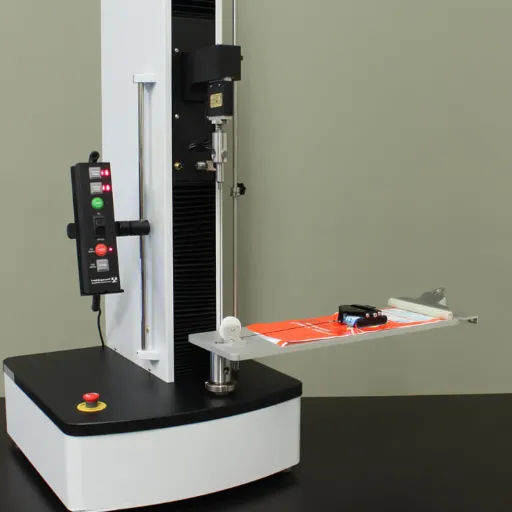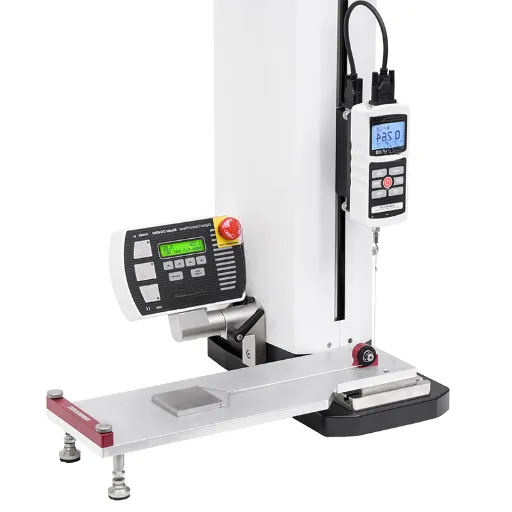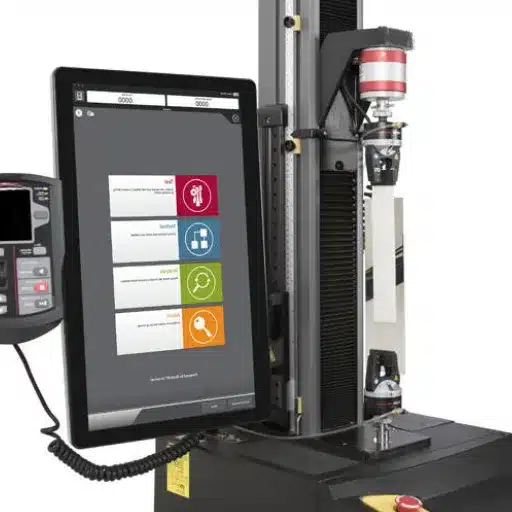The testing of materials is critical in anticipating their strength and overall durability of the materials during an abrupt load or extreme load. The Charpy Impact Test is best known and trusted for said testing of materials. It is well known in the manufacturing, construction, and even aerospace fields. But why is the Charpy Impact Test so well known by these different fields? In this article, I intend to cover the different uses of impact testing and put a core focus on the Charpy Impact Test and the machines that help in the assessment of the Charpy Impact Test. In this article, I intend to cover all aspects of the test and how the Charpy machines work and what is their scope. This article is a preparation to understand impact testing better and engineering and material science as well.
Introduction to Impact Testing
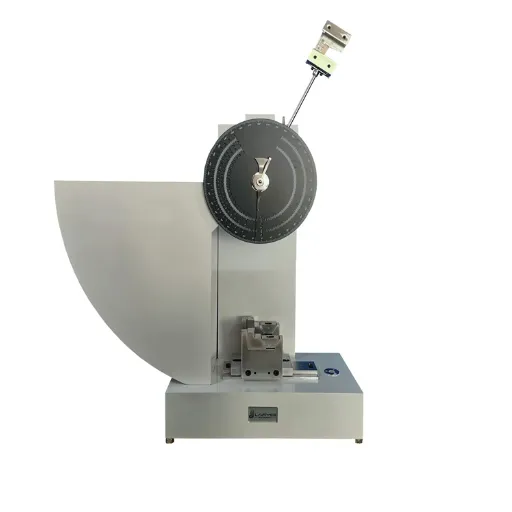
What is the Charpy Impact Test?
The Charpy Impact Test is a method of high-strain testing that’s been established and standardized for specific use to measure energy a material absorbs during fracture as a result of impact. This energy absorption is critical for a material as it directly relates to its ability to sustain a sharp impact; the Charpy Impact Test method provides a formal way of measuring that energy. The test is notably used for the evaluation of metals and other materials, along with their structural soundness, especially at varying temperatures, in the fields of material science and engineering.
Performing the test strikes the sample with a pendulum hammer. The sample is placed horizontally on two anvils and hit opposite the notch. The notch is an important part since it focuses strain to the material, imitating conditions where a crack or some kind of imperfection could already be in place. The energy absorbed during the fracture is recorded, which provides valuable insight into the material’s behaviour under dynamic loads.
In terms of material that will face rapid impact speed, such as the automobile, aerospace, and building sectors, the Charpy Impact Test is very important. This test informs whether a material is ductile or brittle, which allows the engineer to choose materials based on the necessary safety and performance factors for the environment. This method allows manufacturers as well as researchers to verify that components and structures are built to the safety codes and are dependable under different circumstances.
Purpose of Impact Testing in Material Evaluation
The impact test is important in assessing the performance of materials in engineering. Such a test reveals their ability to resist sudden and heavy impact loads without fracturing or failing. A material’s ability to perform in shocks, impacts, or sudden loading in real-life situations is assessed by impact testing. Engineers can estimate the impact of materials in real-life applications by testing materials under laboratory impact tests.
Key Benefits of Impact Testing:
- Identifies materials suitable for particular conditions or applications
- Ensures products meet functionality requirements and safety standards
- Helps detect material weaknesses before manufacture or deployment
- Ensures compliance with regulations and safety standards
In addition, impact testing complies with regulations and safety standards. Impact resistance requirements for components are a part of the strict codes of many industries, such as transportation, manufacturing, and construction. Conducting these impact tests serves as verification for the manufacturers and researchers that their products and materials meet the standards, which enhances safety and decreases risk to the public.
Overview of Charpy Machines
Charpy testing apparatus are designed impact testing devices and are used to conduct the Charpy impact test. This test apparatus is used to calculate the energy absorbed by a material under a high speed impact. This energy is very important and provides information regarding the material’s impact resistance and toughness. Like other test apparatus, this is very crucial in materials testing and is very important to verify safety and reliability of the material in various industries.
The fundamental function of a Charpy device lies with the pendulum hammer, which swings to strike a sample of the material. Usually, the sample is notched to enhance the stress concentration for improved impact absorption. The energy absorbed in the test is computed from the change in the potential energy of the pendulum before and after the impact. This type of information allows engineers and researchers a very precise approximation of the material’s behaviour in sudden impact conditions.
The Charpy test is very important for material development and quality assurance. Materials used in industries like aerospace, automotive, manufacturing, and construction are subject to safety regulations and standards that must be adhered to. By evaluating material characteristics, the test offers an important impact in the reduction of danger in the applications of the materials, helping to protect and ensure the safety of the end products.
How the Charpy Impact Test Works
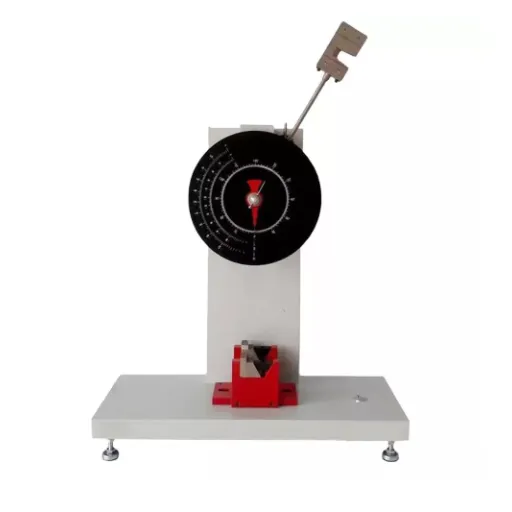
Equipment Used in Charpy Testing
| Equipment Component | Description |
|---|---|
| Charpy Impact Tester | Machine equipped with heavy pendulum and frame |
| Pendulum Hammer | Released from preset height to strike notched specimen |
| Scale/Digital Display | Shows amount of energy absorbed by pendulum |
| Test Specimen | Rectangular bar with precisely machined notch |
| Environmental Chambers | Temperature-controlled devices for specific temperature testing |
The specimen for Charpy testing is a rectangular bar with a precisely machined notch of a standard size. The notch is important to the test as it serves as a stress concentrate from where the fracture starts during impact. Depending on the study, the materials for specimens may be metals, polymers, or composites. For the sake of uniformity and comparability of results, the concerned standards such as ASTM or ISO state the dimensions and the shape of the notch.
Sample Preparation for Charpy Tests
Critical Preparation Requirements:
- Comply with dimensional requirements of ISO or ASTM standards
- Maintain uniform surface finish and machining precision
- Ensure proper notch geometry without defects
- Condition specimens to appropriate temperatures when required
In Charpy impact testing, the preparation of your test samples is crucial and must be executed correctly if you want to obtain valid and dependable results. The samples, typically called test specimens, need to comply with the dimensional requirements of recognised standards such as ISO or ASTM. This compliance is vital to preserve the uniformity and comparability of the results. Such specimens are generally rectangular and have a defined notch on one side. The notch is designed to serve as a stress concentrator during impact.
All materials intended for specimen fabrication need to be carefully prepared so that no defects are introduced which may affect the results. Specimen preparation is expected to meet rigid requirements and scrutiny especially for factors such as surface finish, machining precision, and notch geometry. Even slight deviations in any of the factors is likely to cause damage and invalidate the test results and as such specimen preparation is expected to be rigorous.
Step-by-Step Testing Process
- Preparing The Test Specimens: Start by preparing test specimens that comply with standardized dimensions and other relevant guidelines. All materials should appear seamless, uniform, and without any defects that could influence the final result. Specimens should further be conditioned to the proper temperature using environmental chambers or temperature-controlled devices in order to simulate appropriate conditions.
- Setting Up The Equipment: Make sure the Charpy impact testing machine is calibrated to function within the required specifications. Secure the specimen on the machine’s anvil, ensuring that the notched edge is facing the pendulum and angled towards the direction of the impact. Confirm the alignment for precision.
- Conducting The Test: Allow the pendulum to release from its set height and hit the notched specimen. The recorded energy from the impact is a direct measure of the material’s fracture toughness. Ensure to repeat the process for as many specimens as possible for consistent and trustworthy data.
- Recording and Analyzing Results: Take note of the data presented from each test and determine an average for the absorbed energy. Relate the findings with the material standards and performance criteria to analyze the compatibility of the material with the intended application. Make sure to clearly document the analysis for subsequent use.
Applications of the Charpy Impact Test
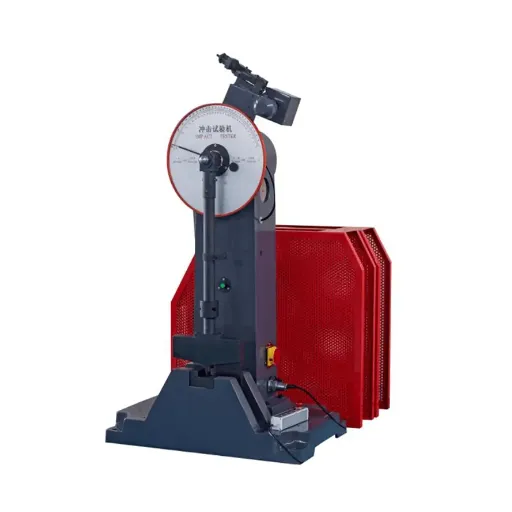
Importance in the Construction Industry
The Charpy Impact is a test instrument which evaluates the toughness and impact resistivity of a material, and is vital for the construction sector. Bridges, buildings, and other structures often face sudden forces. Evaluating performance on impact helps ensure compliance with safety and performance standards. Appropriate impact resistant materials help reduce the chance of failure. Engineers seek and choose these materials.
This test helps in choosing materials by allowing the performance of metals to be compared for similar conditions. Materials that perform better in energy absorption in the Charpy test tend to be preferred for parts that are designed to withstand shocks and stresses. This protects and maintains the project and its structure for a longer time.
Furthermore, the Charpy test is crucial for following building codes and other quality controls. A number of codes mandate particular impact resistance values to materials to avoid failure due to loading or extreme weather. Use of the Charpy test helps ensure adherence to the codes for a safer and stronger infrastructure and environment.
Role in Automotive Safety Testing
Critical Automotive Components Tested:
- Bumpers and impact-absorbing structures
- Chassis components
- Safety cage elements
- Structural reinforcements
In the realm of automotive safety, the Charpy test is essential for confirming that a vehicle can sustain an impact. Every part of a vehicle’s system that is designed with passenger safety in mind—including the bumper, the chassis, and safety cage components—must be made with materials that can handle high-impact forces. This test is important to the vehicle manufacturing process because it ensures that each of these parts is constructed of materials that will not fail catastrophically when subjected to sudden impact forces, which are typical in real-world vehicle collisions.
The Charpy test, in relation to its automotive applications, is most significant when it comes to ensuring the safety of vehicle components in extreme temperatures. Since vehicles, and their parts, experience weather changes and temperature variations over time, understanding the behavior of the components is of vital importance. The results of the Charpy test confirm that the materials used behave as expected and retain their strength and toughness, regardless of the operating temperature, which is a key concern when it comes to vehicle safety.
Aerospace Material Reliability
Impact testing is especially important in the aerospace field, where a failure of a single component could lead to tremendous losses in terms of cost and human life. The components must operate properly under a wide range of operating conditions, where temperature changes rapidly, pressure is enormous, and impacts are high in velocity. The materials are expected to have exceptional toughness and fracture resistance to even begin to perform under these conditions. Impact testing machines provide critical information about the suitability and sturdiness of materials by evaluating their behaviour under sudden impact.
Aerospace impact testing machines simulate actual impact conditions and evaluate the energy E that the material can absorb: useful performance indicators in collisions or impacts from debris. From these results, engineers may pinpoint weaknesses and redesign the materials for enhanced performance. This is especially useful for safeguarding against in-flight, and hence catastrophic, failures, ensuring the safety of passengers and the accomplishment of the mission.
Moreover, impact testing materially helps in the research and development of novel advanced composites and alloys that are increasingly used in aerospace engineering. Testing data impact testing poses helps manufacturers in fine-tuning aerospace materials in terms of strength, durability, and even lighter weight. Thus, impact testing tractors not only enhance the material’s capabilities but also set new frontiers for aerospace.
Significance in Material Testing and Quality Assurance
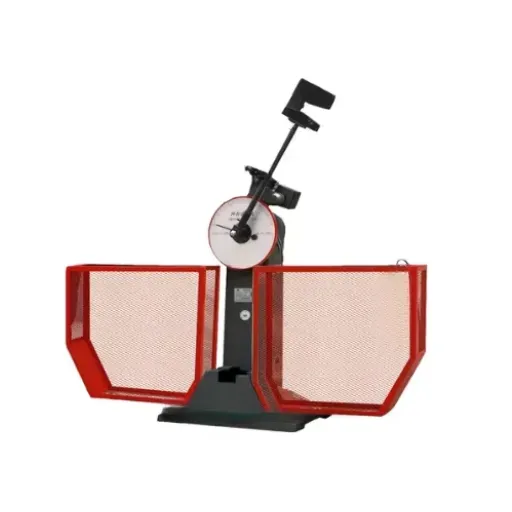
Predicting Material Behavior Under Stress
Impact testing machines help us analyze how materials respond to impacts. We can test materials for the energy-absorption capacity and resistance to breakage. The data from impact testing is critical for engineers and researchers as it helps anticipate how the material responds to impacts in real life.
The data gained from impact testing helps in pinpointing how and when failure will occur. As a result, it is easier to select and improve materials meant for critical applications. Impact testing is crucial in the automotive and aerospace industries, where it is used to certify that the machinery parts can bear extreme stresses without risking safety. It is easier to pinpoint the advantages and disadvantages of a material through impact testing, and it focuses on energy absorption as well as fracture characteristics.
Moreover, impact testing machines have an important role in the quality assurance of products. With the use of impact testing machines, manufacturers can verify that their products fulfill the safety and durability criteria set for them before they are marketed. This type of testing allows manufacturers to manage risk and ensures that their products conform to all applicable standards and regulations. In general, impact testing machines are essential to improving how materials perform, ensuring safety, and fostering innovation in different industries.
Impact Testing for Steel Products
Impact testing machines are essential for understanding how a defined shock impacts steel materials. The data collected regarding percentile strength, toughness, and fracture resistance enables the evaluation and verification of steel products to ensure their performance and dependability. The information brought by the impact testing machines enables the verification of any potential performance failure material to adhere to the safety and performance requirements to guarantee the material’s dependability under actual performance conditions.
The Charpy Impact Test is the most prevalent form of impact testing. The test utilizes a pendulum impact machine to measure the reserved energy for a material during its fracture. This type of testing is vital since it evaluates how well the material withstands impacts at sudden shock levels, at even extreme temperatures. The procured data is very crucial and enable the verification of the steel material to ensure it is appropriate for the anticipated applications in automotive, construction, and other machinery industries where high durability is necessary.
Fracture Mechanisms and Toughness Assessment
Impact testing machines are essential in evaluating the toughness of steel and other materials. They provide metrics such as the energy a material absorbs in a fracture process. Such information is a characteristic of a material’s performance under a brittle failure. It is very useful in understanding how a material behaves under a shock load. This information is very important in ensuring the safety of construction, automotive, and aerospace industries. The most widely used impact test is the Charpy or Izod test. The test consists of a hammer striking a notched specimen at a prescribed velocity. The energy absorbed in the fracture process is recorded. The result provides useful information on the ductile to brittle transition temperature of the material. This is of great concern in steel products used in low temperature regions as a brittle failure may be very disastrous. The validation of a material’s toughness at the temperatures of concern is very important for the safety and performance of the product.
The use of impact testing machines enables producers to fine-tune the material’s formula and manufacturing techniques to improve fracture resistance. Such machines facilitate the creation of high-toughness steels, which, in turn, minimize the risk of a sudden failure for steels intended for use in extreme conditions. The reliable evaluation and the data provided by impact testing are critical in the progress of material science and are crucial for meeting international safety regulations.
Advancements in Impact Testing Technology

Automated Testing Systems
Benefits of Automation in Impact Testing:
- Eliminates human error through controlled procedures
- Provides sophisticated sensors for detailed data capture
- Maintains consistent test quality across large volumes
- Reduces testing time while improving accuracy
- Includes automated data analysis and report generation
Automated testing has fundamentally transformed impact testing, facilitating repeatability, accuracy, and speed. These systems eliminate a pinch of human error by automating tests in controlled environments with set procedures. The systems are also equipped with sophisticated sensors and software capable of capturing fine details impact energy and material deformation—parameters critical to understanding the toughness of materials, especially those challenged by harsh testing environments.
Automated impact testing machines are valuable for their ability to conduct large numbers of tests while maintaining consistent test quality. This is of special importance to the aerospace, automotive, and construction industries where materials must adhere to stringent safety regulations. Automation of the testing process not only cuts down on the variability in results that is often seen with manual testing but also boosts productivity by reducing the length of the testing process. Faster testing leads to new materials being developed more rapidly without compromising the precision of the performance evaluations.
Implications for Efficiency and Accuracy
The use of impact testing machines is indeed a concern for efficiency and precision. Such a device enables us to easily assess the toughness, strength, and impact resistance of a material. Reliable data, particularly from the aerospace, construction, and automotive sectors, significantly impacts safety and functionality, thus requiring a higher degree of impact and resistance assessment.
As previously mentioned, today’s impact testing machines can be equipped with automation and sophisticated software. This makes the collection of data, its analysis, and the generation of reports faster. The impact testing improvements that reduce manual processes make the testing and verification of materials faster, more efficient, and better suited for large-scale operations.
In addition, impact testing machines excel in accuracy, which aids in improving product design and in choosing appropriate materials. Having gained insights into materials, researchers and engineers can streamline their product designs to satisfy the criteria and their lifespan requirements. While this enhances the materials, products, and their quality, it also minimizes the chances of issues emerging, enhancing safety and reducing costs.
Future Trends in Impact Testing
| Future Trend | Impact on Testing |
|---|---|
| Advanced Automation | More precise, automated testing with advanced multitasking capabilities |
| Environmental Responsibility | Reduced energy consumption and circular economy adherence |
| Advanced Materials Testing | Testing for composites, nanomaterials, and next-generation polymers |
| Complex Force Analysis | Enhanced understanding of material behaviors under intricate conditions |
As impact testing becomes more modernized, the general goal remains the same. There is a growing need for impact testing to become more precise and automated and to have more uses. The impact testing machines needed to test products are in the process of being developed and become one of the most crucial aspects of impact testing in the future. There is a greater need for impact testing machines to innovate, as they can generate large amounts of data, perform advanced multitasking, and streamline impact testing. Such attributes help optimize impact testing processes and reduce errors, which can increase the grasp of products and provide greater impact testing forecasting.
Another major concern is the impact testing methods and their effect on the environment and how to conduct testing in a more responsible manner. The methodologies used in current impact testing are conducted while keeping in mind the responsible conduct of testing. Energy and impact on materials are both drastically reduced, and impact testing methods are developed to adhere to a circular economy. This is in accordance with stricter regulations in impact testing across all industries as well as in construction, automotive, and aerospace impact testing.
Frequently Asked Questions (FAQ)
Q: What is the Charpy impact test?
A: The Charpy impact test is an established testing procedure used to evaluate the toughness of materials, especially metals, by calculating the energy absorbed during fracture of a notched specimen impacted by a pendulum hammer.
Q: How does the Charpy impact test work?
A: The Charpy impact test works by placing a specimen with a V-notch in the testing machine. The pendulum is released to strike the specimen. The energy consumed during the impact fracture of the specimen is measured. This value indicates the thickness and the impact strength of the material.
Q: What materials are typically tested using the Charpy impact test?
A: The Charpy impact test is used for steel products, including structural steel, and is used to verify the impact toughness and resistance to brittle fracture at different temperatures.
Q: What is the difference between the Charpy and Izod impact tests?
A: The notable difference is in the specimen configuration and the testing set-up. The Charpy test uses a V-notch on the opposite side of the support while the Izod test has the notch on the same side as the support. Both tests serve the purpose of estimating the impact energy but the specimen geometries differ.
Q: How does temperature affect the results of the Charpy impact test?
A: For the materials under consideration in the test, the impact toughness is highly dependent on the test temperature. Decreased temperatures reduce the energy available for absorption and, hence, increase the chances for brittle fracture. Elevated temperatures may improve the toughness of the materials.
Q: What are the testing standards for the Charpy impact test?
A: The Charpy impact test has several testing standards. One of those standards is the ASTM E23, which gives the test methods, the specimens requirements, and the test conditions that need to be followed in order to obtain repeatable test results for the different materials.
Q: What is the significance of the energy absorbed in the Charpy impact test?
A: The energy absorbed during the Charpy impact test is important because it tells us how tough the material is. The higher the energy absorption, the better is the material’s toughness to resist impact and fracture. This feature is extremely important for critical safety components or structural parts.
Q: Can the Charpy impact test be performed on different specimen sizes?
A: The Charpy impact test can indeed be conducted on a range of specimen sizes. Nevertheless, it is critical that these sizes conform to established design standards to ensure repeatability and comparability of the test results as required by ASTM or any other regulating body.
Q: What is an instrumented Charpy impact test?
A: An instrumented Charpy impact test is an advanced type of the classical method that incorporates impact sensors and data acquisition devices that, apart from measuring absorbed energy, also measure the load and displacement during impact, allowing for a more comprehensive assessment of material behaviour.
References
-
Evaluating Fracture Surfaces from Charpy Impact Tests – Keyence
Explains the energy absorption measurement and fracture surface evaluation in Charpy tests. -
What is a Charpy Impact Test? – TWI Global
Offers a detailed explanation of the Charpy V-notch test and its applications. -
All About the Charpy Impact Test – Xometry
Discusses the history, purpose, and significance of the Charpy impact test. -
Impact Testing Explained: Methods, Applications, & Benefits – Dewesoft
Highlights the applications of Charpy impact testing in structural steel and infrastructure projects.

